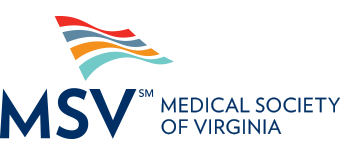Act F.A.S.T. If You Suspect a Stroke
BY Kerstin Bettermann, MD
Our blog this month is written for you to share with your patients. For details about MSV’s free Stroke Smart educational materials for your practice, read the last section of the blog.
Every 40 seconds in the U.S. someone has a stroke — and every 3.5 minutes someone dies of stroke. It’s the 5th leading cause of death in the U.S., and a leading cause of serious long-term disability. But do you know how to identify whether you or someone you know may be having a stroke? Recognizing a stroke is critical to treatment – that’s where F.A.S.T comes in. Every minute counts!
The sooner emergency treatment begins, the better the chances for recovery and survival. In fact, the therapeutics that work best can be given only if the stroke is diagnosed and treatment begins within 4.5 hours of the first symptoms. And getting the earliest treatment possible can make a big difference in reducing the risk of disability. That’s why the Centers for Disease Control and Prevention (CDC) created F.A.S.T. to help people easily remember what’s most important about recognizing a stroke, so you can act quickly and call 9-1-1 as soon as possible.
F.A.S.T.
F: FACE
Ask the person to smile. Does one side of the face droop?
A: ARMS
Ask the person to raise both arms. Does one arm drift downward?
S: SPEECH
Ask the person to repeat a simple phrase. Is their speech slurred or can they not express themselves or understand?
T: TIME
If any of these signs are present, call 9-1-1 right away.
Stroke Risks and Symptoms
Certain things can increase stroke risk, including age, gender, race or ethnicity, medical conditions, and family history. As we age, the risk for stroke goes up. Though strokes can happen at any age, the risk doubles every 10 years after age 55. Strokes are more common in women than men, and women are more likely than men to die from stroke no matter their age. People who are Black, Hispanic, American Indian, and Native Alaskan are more likely to have a stroke than non-Hispanic Whites or Asians, and Blacks are more likely to die from stroke than Whites. Finally, high blood pressure is a major risk factor for stroke. Other medical conditions that increase stroke risk include high cholesterol, heart disease, diabetes, obesity, sickle cell disease, and using tobacco products. This list does not include everything, so if you have questions about these and other risk factors like medications or lifestyle choices and behaviors, see a doctor to get detailed information.
Though the CDC’s F.A.S.T. is a memorable and helpful tool to remember how to recognize stroke, it doesn’t tell the full story. Let’s take a closer look at stroke symptoms which include the sudden onset of:
- Numbness or weakness in the face, arm, or leg, especially on one side of the body
- Confusion, including trouble speaking or understanding speech
- Trouble seeing from one or both eyes
- Dizziness, problems with balance or coordination, and trouble walking
- Headache, especially a severe one that comes on suddenly
A stroke is a medical emergency. Even if the symptoms go away, it’s important to call 9-1-1 to get help and get that person to the hospital — fast.
Physicians: Get Free Stroke Materials from MSV
Great news! MSV has free stroke materials available for Virginia medical professionals to share with patients to help them “Be Stroke Smart.” Stroke Smart posters, magnets, and wallet cards are all available for your practice. View the materials on MSV’s Stroke Smart page, then click the link to request your materials — in English or Spanish — at no charge.
To offer Stroke Smart, the MSV Foundation partnered with the Virginia Department of Health and the Virginia Stroke Systems Task Force, with funding through the CDC Paul Coverdell National Acute Stroke Program.
The information contained in this blog is for educational purposes only and does not constitute health care advice.


